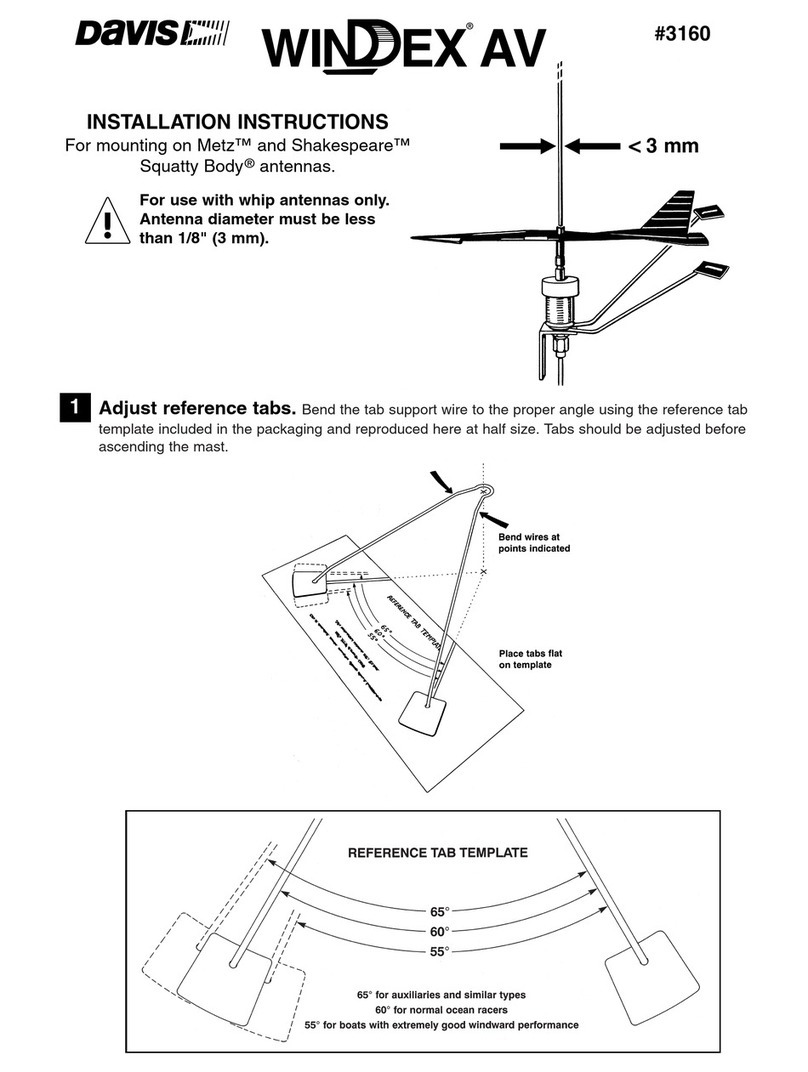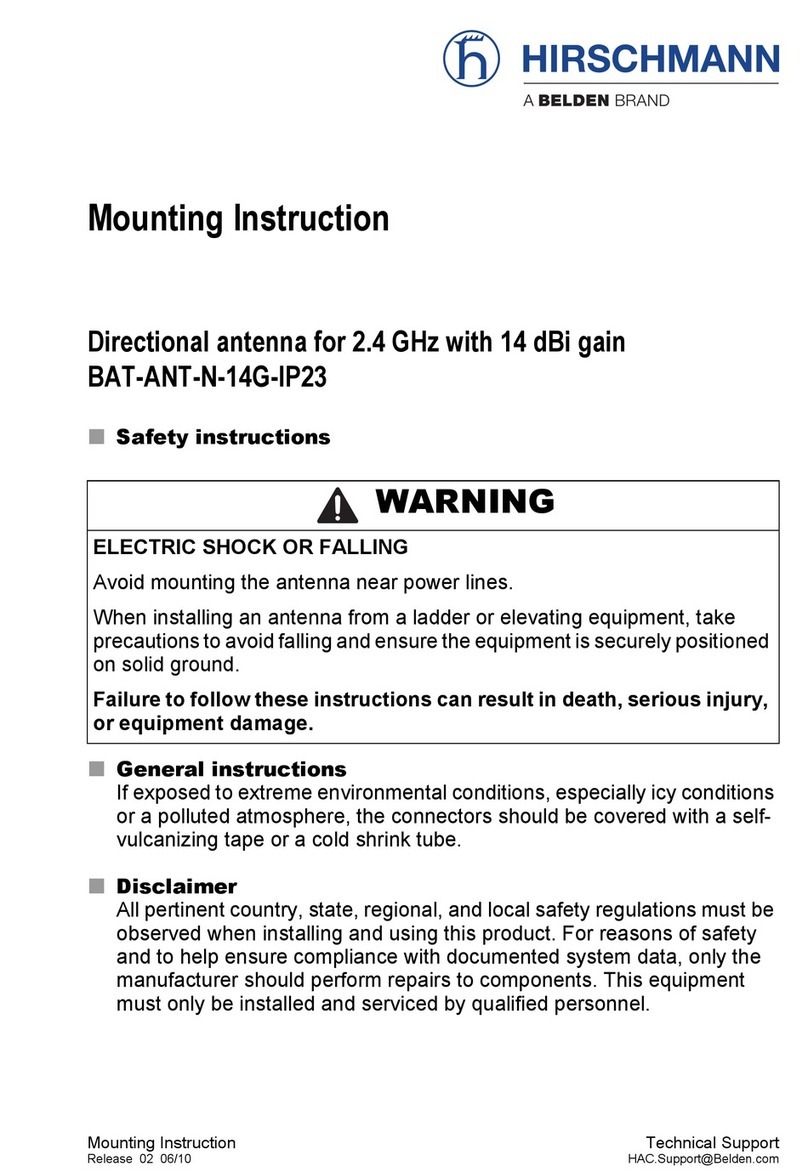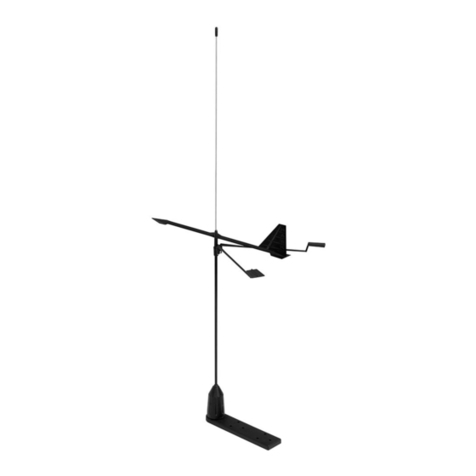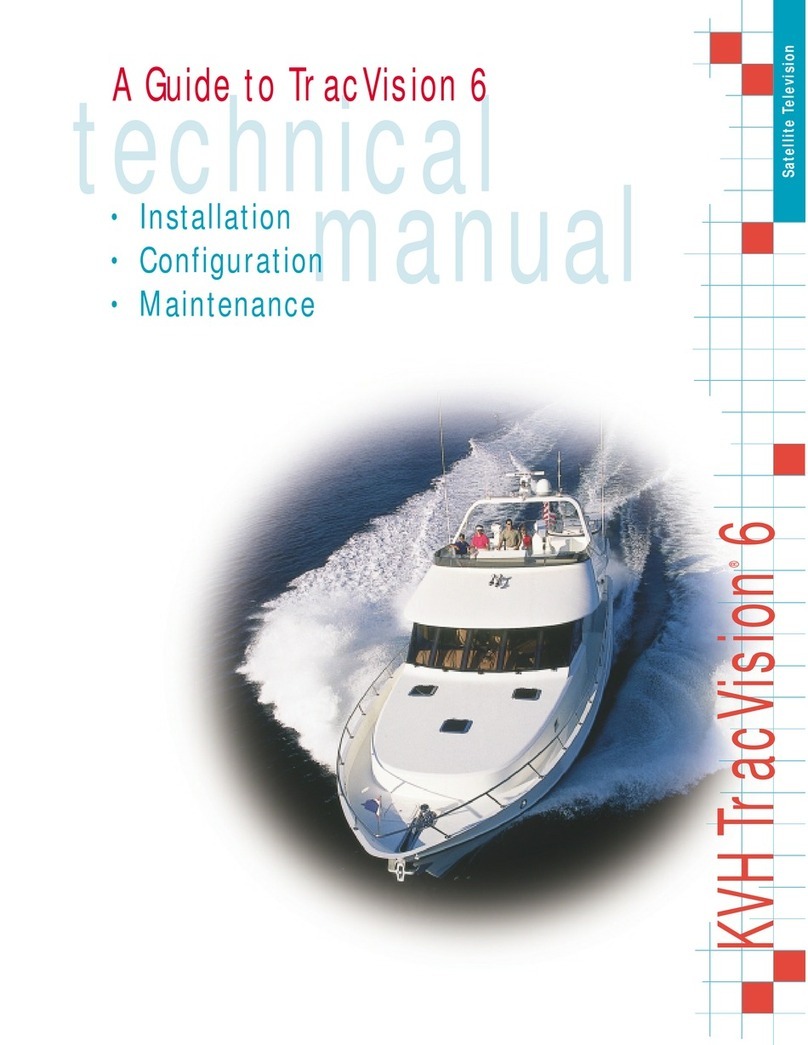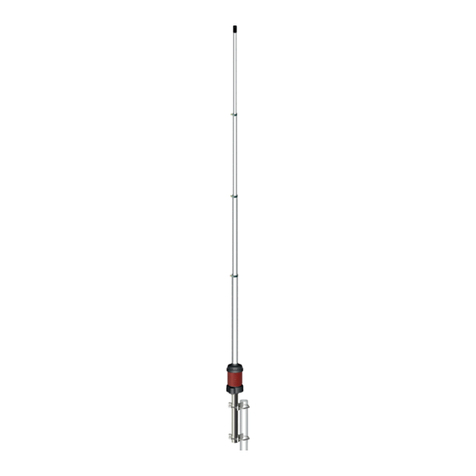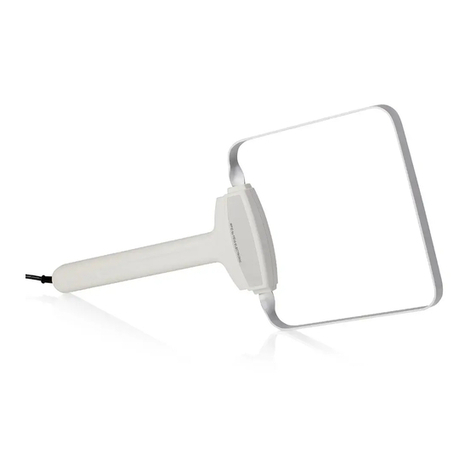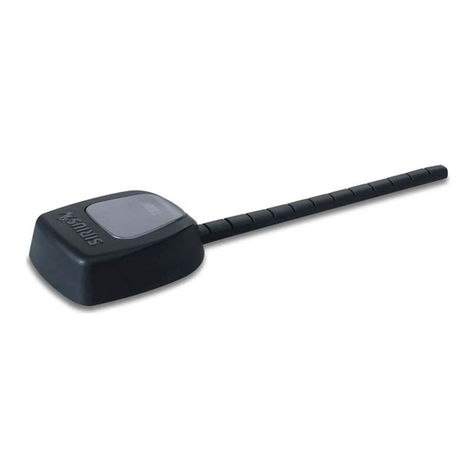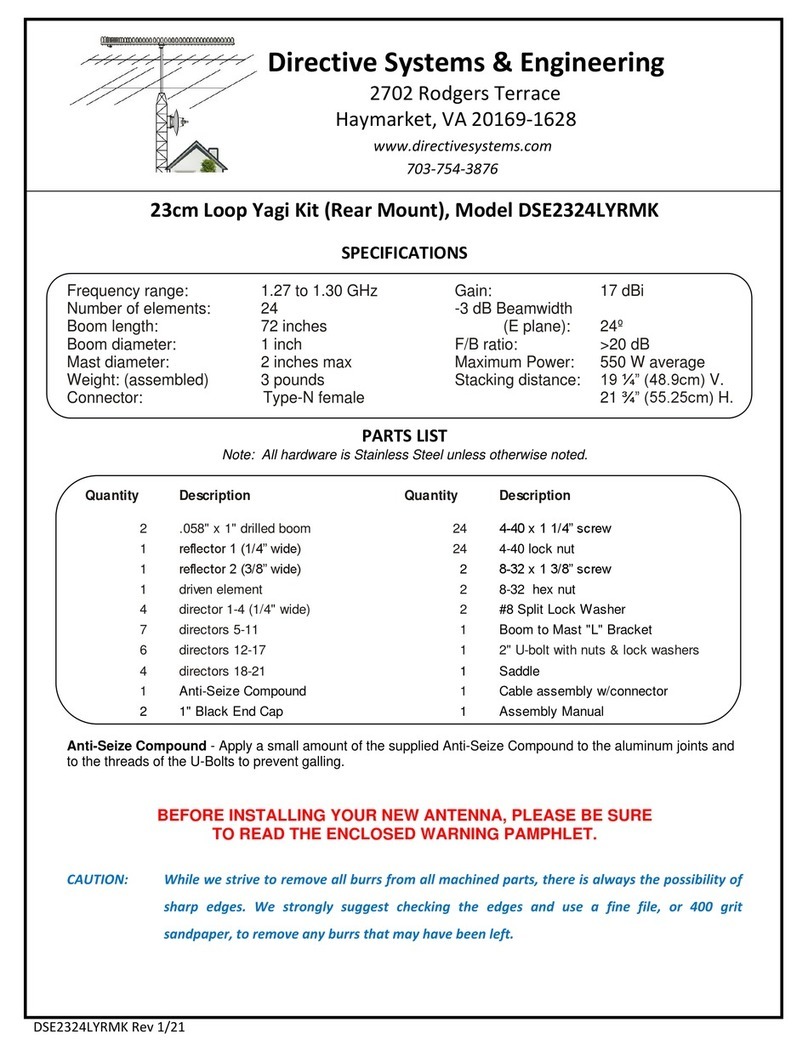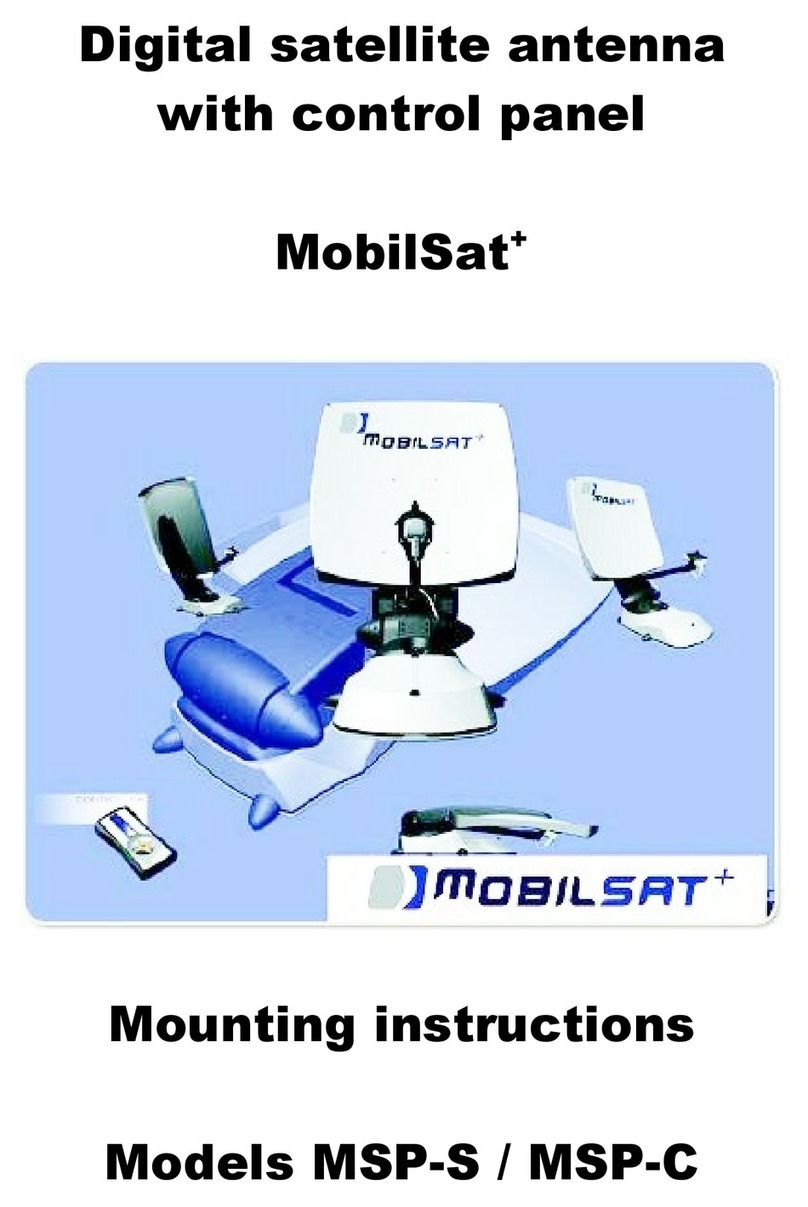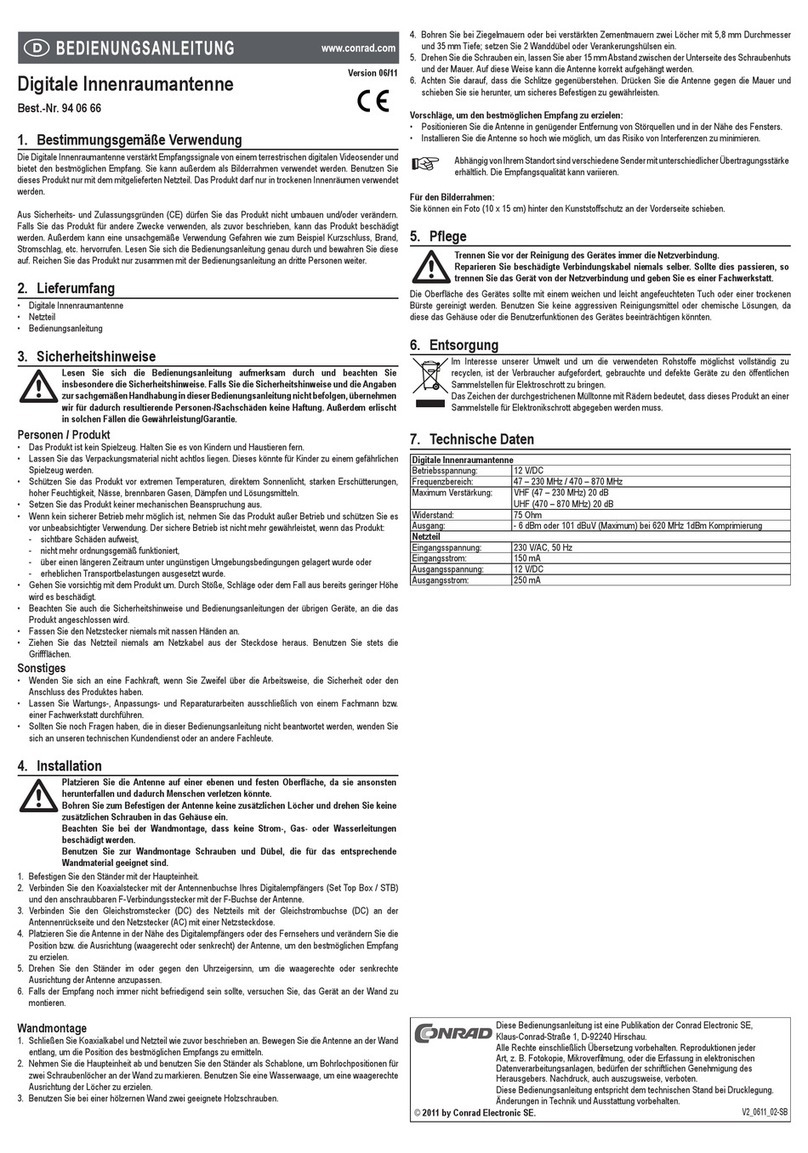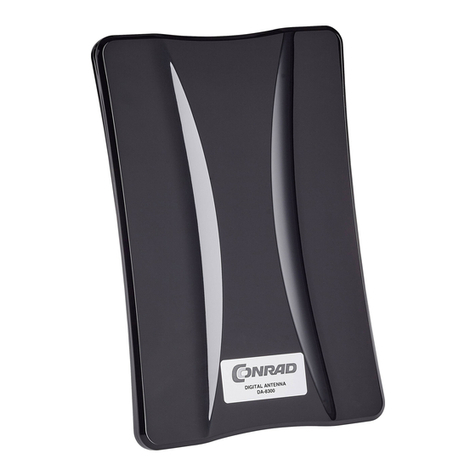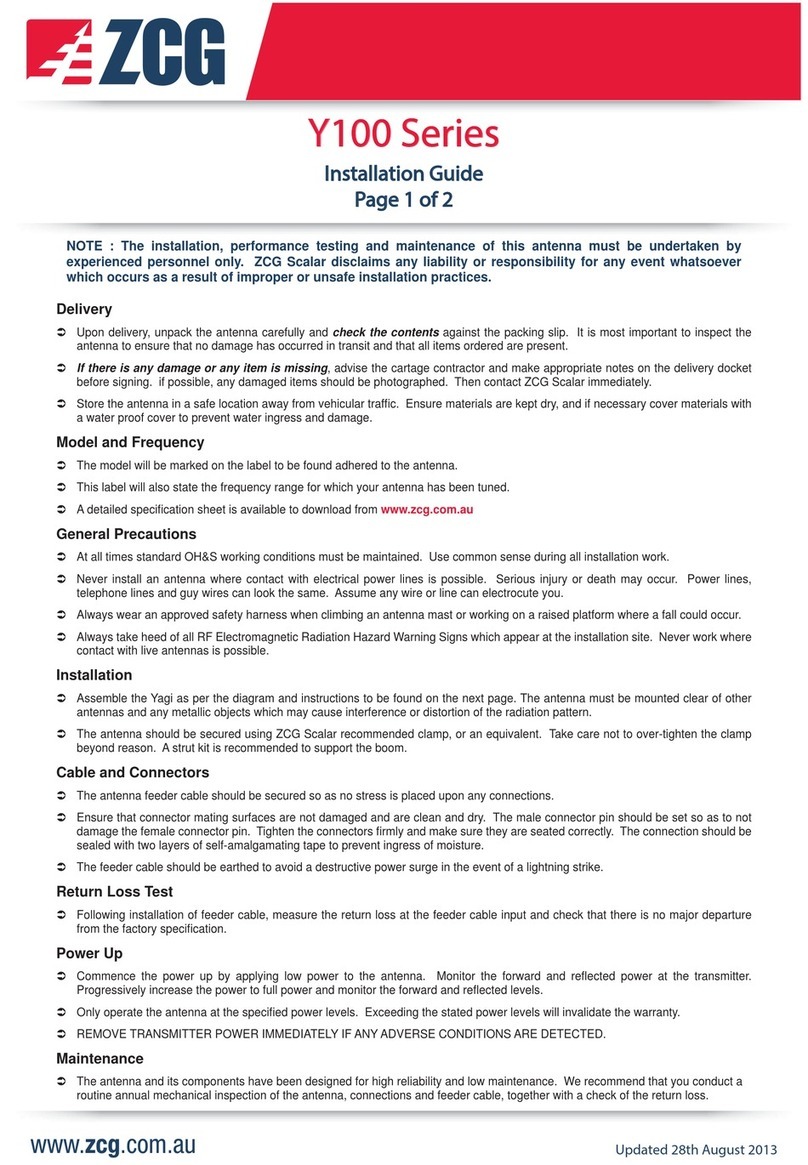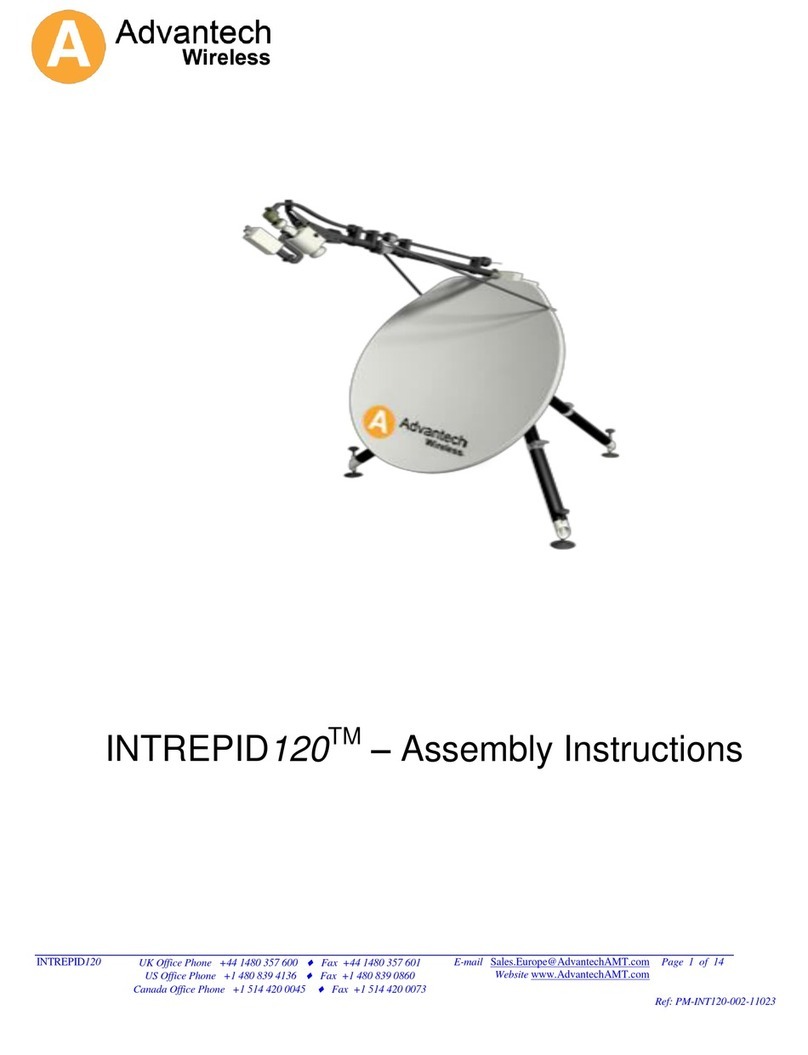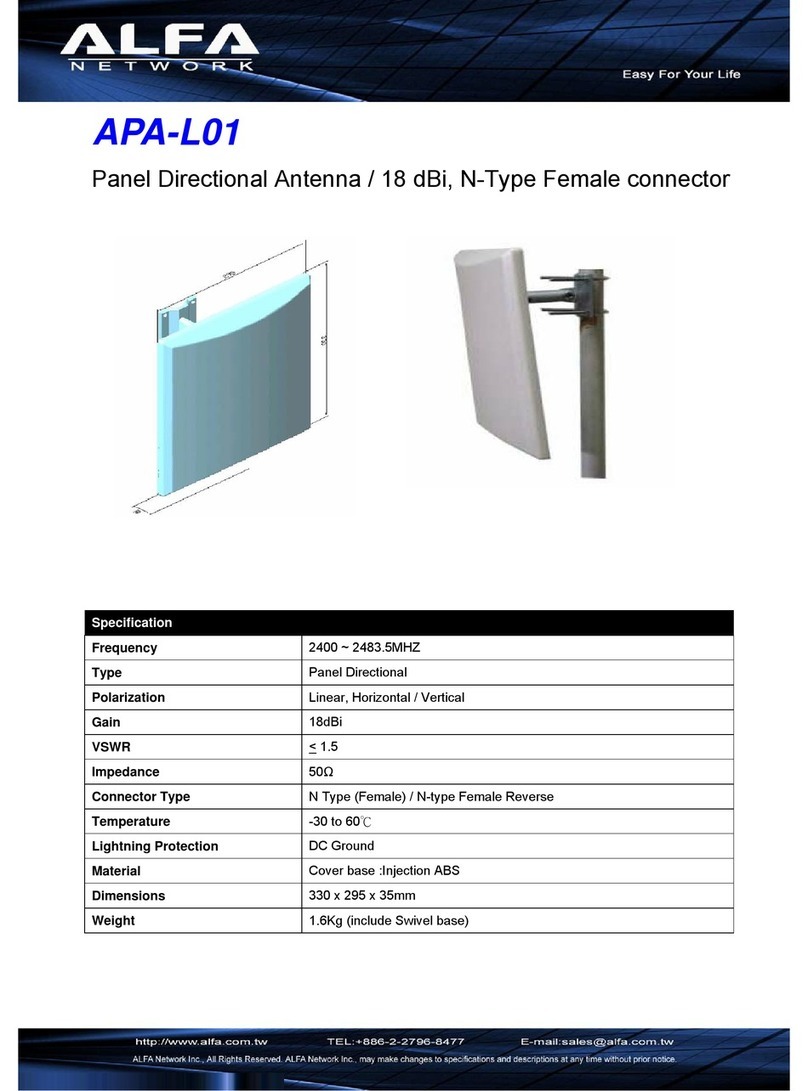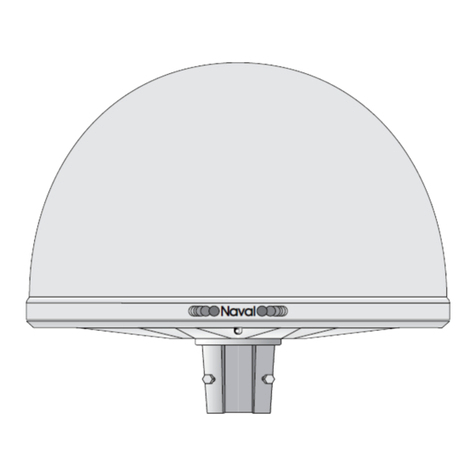WB21 Antenna Range
Installation Guide
Introduction
The WB21 range of high gain, directional antennas provide a simple, cost effective way of improving
the performance of a UMTS or GSM device. For best results, the antenna should be fitted externally
in an elevated position.
Determine a suitable Mounting Location
For a good installation the antenna should be directed towards the strongest networ signal
to acheive this follow the guide below.
1. Connect the antenna to your data card or modem with the antenna adapter and coaxial
cable provided.
2. Ensure that your device is connected to the networ and displaying the signal strength indicator.
3. With the antenna at selected location, rotate it in approximately 45 degree steps – in each posi-tion,
you may need to wait for up to one minute to allow the signal strength indicator to update.
Note: Signal strength indication may be displayed either as:
a. Graphically with bars, ( where more bars is a better signal), or
b. As a signal level value in dBm (e.g. -80) - in this case, the lower the number, the better
the signal, (i.e. -71 is stronger signal than -83).
Mounting the Antenna Externally
Ensure that the selected mounting location can be safely accessed with the equipment that you
have available and mount the antenna so that it has at least 1 metre of clearance from all
obstructions if possible.
Mount the antenna
The antenna is supplied with weatherproof mounting hardware for wall or mast mounting
and should be fitted with the cable entry at the bottom.
Mast mounting: The clamp assembly allows fitting to masts of between 20-50mm diameter.
Wall mounting: The wall mount brac et can be used to mount the WM11 antenna to walls or
other secure flat surfaces. Suitable screws and wall plugs (if required) should be sourced locally.
Secure the antenna in place and waterproof the exposed connections
Fully tighten the mounting hardware, ensuring the antenna direction is correct.
If exposed the RF connector joint should be waterproofed with a weatherproof electrical tape
(self amalgamating type is recommended) allowing a significant overlap of each turn and ensuring
that the overlap is in the opposite direction to predicted water fall.
